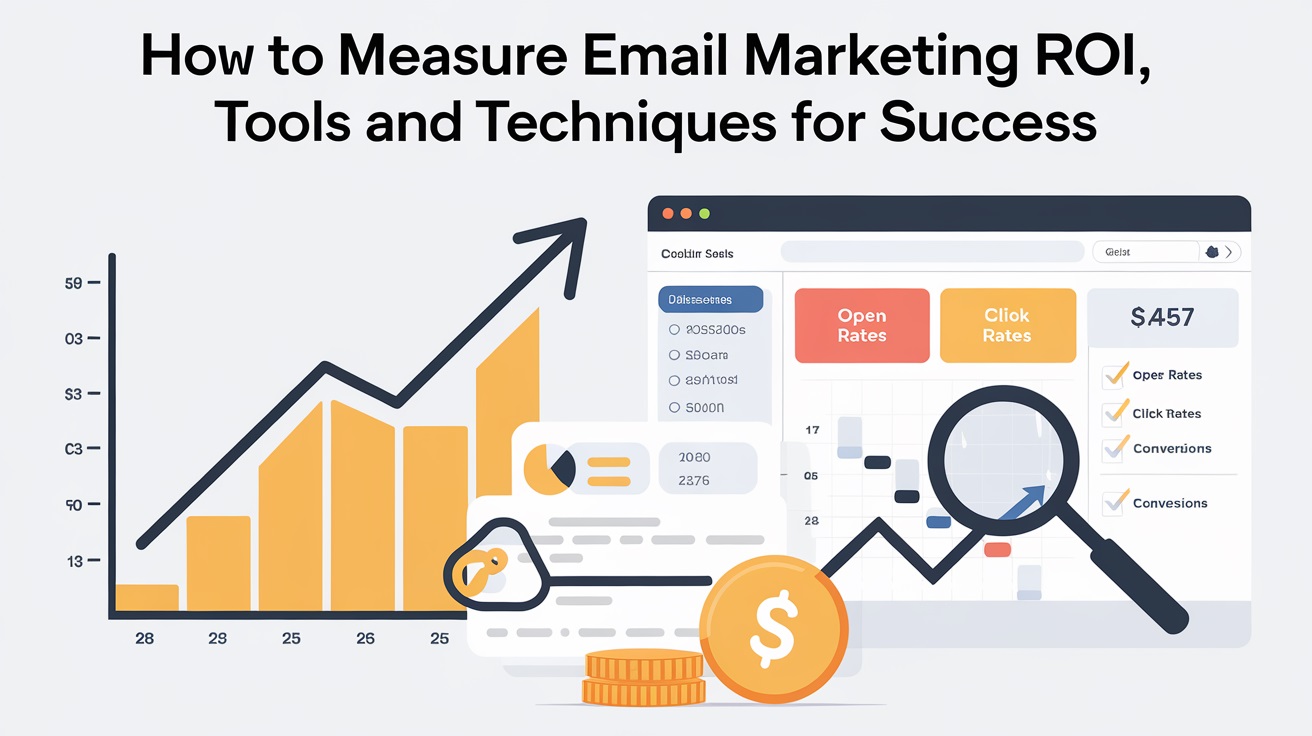
How to Measure Email Marketing ROI: Tools and Techniques for Success
Introduction
Have you ever launched an email campaign and wondered, "Was that worth it?" If so, you're not alone. According to a study, email marketing offers an average ROI of $42 for every $1 spent, but only if done right. Measuring email marketing ROI isn’t just a numbers game—it’s a critical skill that separates successful marketers from the rest.
In today’s competitive digital landscape, understanding and optimizing ROI is essential. This blog will explore what email ROI means, why it matters, and the tools and techniques you can use to master it. Let’s dive in.
What Is Email Marketing ROI and Why Does It Matter?
Email Marketing ROI Defined: Email ROI measures the profitability of your email campaigns relative to the resources invested. Here’s the formula:
ROI (%) = ((Revenue Generated - Campaign Costs) ÷ Campaign Costs) x 100
For example, if you spend $500 on a campaign and generate $5,000 in revenue, your ROI is 900%.
Why It Matters:
-
Justify Budgets: Demonstrate the value of email marketing to stakeholders.
-
Optimize Campaigns: Identify what’s working and what needs improvement.
-
Drive Revenue: Focus on strategies that maximize profitability.
Essential Metrics to Track Email Marketing ROI
To effectively measure ROI, track these key metrics:
-
Open Rates: Measure the percentage of recipients who open your emails. High open rates often indicate compelling subject lines.
-
Click-Through Rates (CTR): Monitor how many people click on links in your email to gauge engagement.
-
Conversion Rates: Determine the percentage of recipients completing desired actions, such as purchases or sign-ups.
-
Customer Lifetime Value (CLV): Predict the total revenue generated by a customer acquired through your email campaign.
-
Unsubscribe Rates: Track how many people opt out to assess audience retention and campaign effectiveness.
Futuristic Techniques for Measuring ROI
The future of email marketing lies in advanced analytics and innovative techniques. Here are some forward-thinking methods:
1. AI-Powered Predictive Analytics
Leverage AI tools to analyze past campaigns and predict future performance. AI can suggest the best time to send emails, optimal subject lines, and ideal audience segments.
2. Attribution Modeling
Go beyond single-touch attribution. Multi-touch models provide insights into how email campaigns influence different stages of the customer journey.
3. Behavioral Tracking
Track user actions in real-time. For instance, monitor how recipients interact with your email, from clicking links to visiting product pages.
4. Integrating Offline Data
For businesses with physical stores, combine email data with offline sales data to measure the complete impact of your campaigns.
Tools to Measure and Optimize ROI
Use these tools to simplify ROI measurement and improve campaign performance:
-
Google Analytics: Track email-driven traffic and revenue.
-
HubSpot or Mailchimp: Manage campaigns and analyze results in one place.
-
Klaviyo or ActiveCampaign: Advanced platforms for segmentation and ROI tracking.
-
Custom CRM Integrations: Connect email platforms to your CRM to tie campaigns directly to sales.
-
AI-Driven Tools: Solutions like Seventh Sense optimize send times and forecast ROI.
Actionable Steps to Boost ROI
Follow these steps to maximize the effectiveness of your email campaigns:
-
Set Clear Goals: Define specific objectives, such as driving sales, increasing sign-ups, or nurturing leads.
-
Craft High-Impact Content: Use A/B testing to refine subject lines, visuals, and CTAs.
-
Segment Your Audience: Group recipients based on demographics, behavior, or purchase history.
-
Automate Campaigns: Use automation tools to scale personalized sequences efficiently.
-
Continuously Analyze Data: Review performance metrics regularly and adjust strategies accordingly.
Real-World Examples of ROI Success
Example 1: E-commerce Brand Boosts Sales An online retailer segmented their audience by purchase history and sent personalized recommendations. Result: a 20% increase in conversions.
Example 2: SaaS Company Reduces Churn A software company used behavioral tracking to send targeted retention emails. Result: a 15% improvement in customer retention.
Common Pitfalls to Avoid
-
Neglecting ROI Measurement: Regularly review performance data to ensure campaigns deliver value.
-
Ignoring Underperforming Campaigns: Don’t be afraid to tweak or scrap low-performing emails.
-
Failing to Adapt: Use insights from ROI analysis to refine your approach.
Conclusion
Measuring and optimizing email marketing ROI is crucial for long-term success. By tracking essential metrics, leveraging advanced tools, and adopting innovative techniques, you can transform your email campaigns into revenue-generating powerhouses.
Join Our Newsletter!
Get the latest email marketing insights & tools straight to your inbox with SalesData.in!
